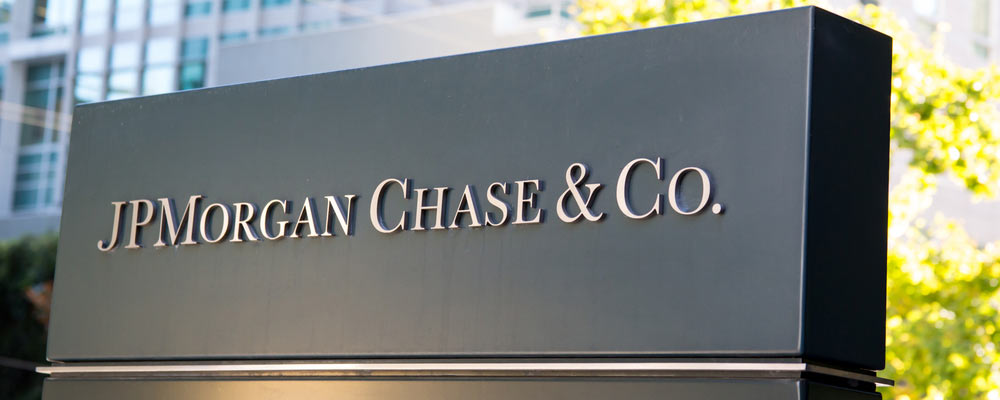Sometimes the newer investors don’t realize how good they’ve got it.
On Tuesday, JPMorgan Chase unveiled a new investing app with an eye-catching price: FREE.
That price trades with the House of Morgan in line with popular stock-trading app Robinhood, which boasts of zero-commission trades.
But comparisons end there, as JPMorgan Chase’s 47 million banking customers dwarf Robinhood’s 5 million.
This pivot to free trades has traditional online brokers shaking in their stockrooms, with Etrade and Schwab shares both moving lower about 3% since the announcement.
Is this an ominous sign for the online brokerage world?
How the Race to the Bottom Started
When I first started trading more than 20 years ago, if I wanted to buy shares of internet high-flyer America Online (AOL), I had to call my Smith Barney broker, Ernie, and place the order.
After we hung up, Ernie would either enter the order in an internal Smith Barney system, or call down to the New York Stock Exchange to execute the order.
Ernie really liked to show me the thrill of stock trading, and often he kept me on hold, allowing me to listen as he barked orders into his direct phone line to the trading floor.
On the other end of his phone line was a floor broker, who would then have to run to the AOL trading post and fill my buy order.
The trade confirmation would then be sent back to Ernie, who would then notify me of the fill price on the stock order.
Sometimes this process took a few seconds. Sometimes it took a few minutes.
Sometimes the floor broker took too long, and our limit buy order just barely missed the offer.
For Ernie’s service, Smith Barney would slap a $50 commission on the trade.
That means for a $10,000 account, a single trade amounted to 0.5% of your principal. Ten trades would set you back 5% in commissions.
Quite simply, the idea of frequently trading in and out of the market with a financial adviser was not for the little guy.
The New Kids in Town
Of course, in the mid- to late-‘90s, stock trading was so profitable that nobody worried about commissions.
Even the new kids in town, the online discount brokerages, charged hefty commissions.
In 1999, Charles Schwab, the largest online broker, charged $29.95 for market and limit orders; the same with investment heavyweight Fidelity.
Upstart Etrade tagged customers $19.95 for limit orders and $29 for options.
The end of the dot-com bubble in 2000 put many new online brokers out of business. Volume tapered off significantly, and brokerage revenue collapsed.
The stock market sludged through a quiet bear market for two years. The online brokers left standing began to cut commissions to steal customers from rivals.
Since then, brokerage commission prices have been on a steady trajectory to zero.
Suddenly, the brokerage world was in a race to the bottom. Stock brokers found themselves on a list of replaceable jobs, like elevator operators and highway toll collectors.
At the same time, technology has also replaced the way we invest. Mobile phone apps have replaced the computer, which replaced the phone.
Just a few years ago, fintech companies like Betterment and Wealthfront showed that you don’t even need to work with a financial planner to plan for retirement.
Simply open an account and fill out a survey pertaining to your investment goals, and let their algorithms do the work.
Lunch Is Never Free
Even though stock trading might soon be free, brokers can generate revenue in a variety of other ways.
They can earn interest on uninvested cash in customer accounts. They also pass through regulatory fees incurred when a trade is placed.
Even though these fees are often smaller than a penny, most brokers unashamedly round up.
Last but not least is the margin rate.
If you want to borrow money from your broker and own more stock than you have cash, the brokerage firm is going to charge you a hefty margin rate. Currently, accounts with $25,000 are paying 8.82% at Fidelity and 9.75% at Interactive Brokers.
Yes, the broker is assuming risk by lending you money to buy more stock. However, with the U.S. 10-year interest rate under 3%, is it that risky when you’ve got automated margin clerks ready to sell?
Brokers like JPMorgan are betting that these rates are set to move higher as interest rates rise. And they’re willing to offer free trades to get you in the door.
Overall, though, the shift toward zero-commission trading is a welcome development for investors, especially ones with smaller accounts.
Regards,

Ian King
Editor, Crypto Profit Trader




